PAT CLEVELAND
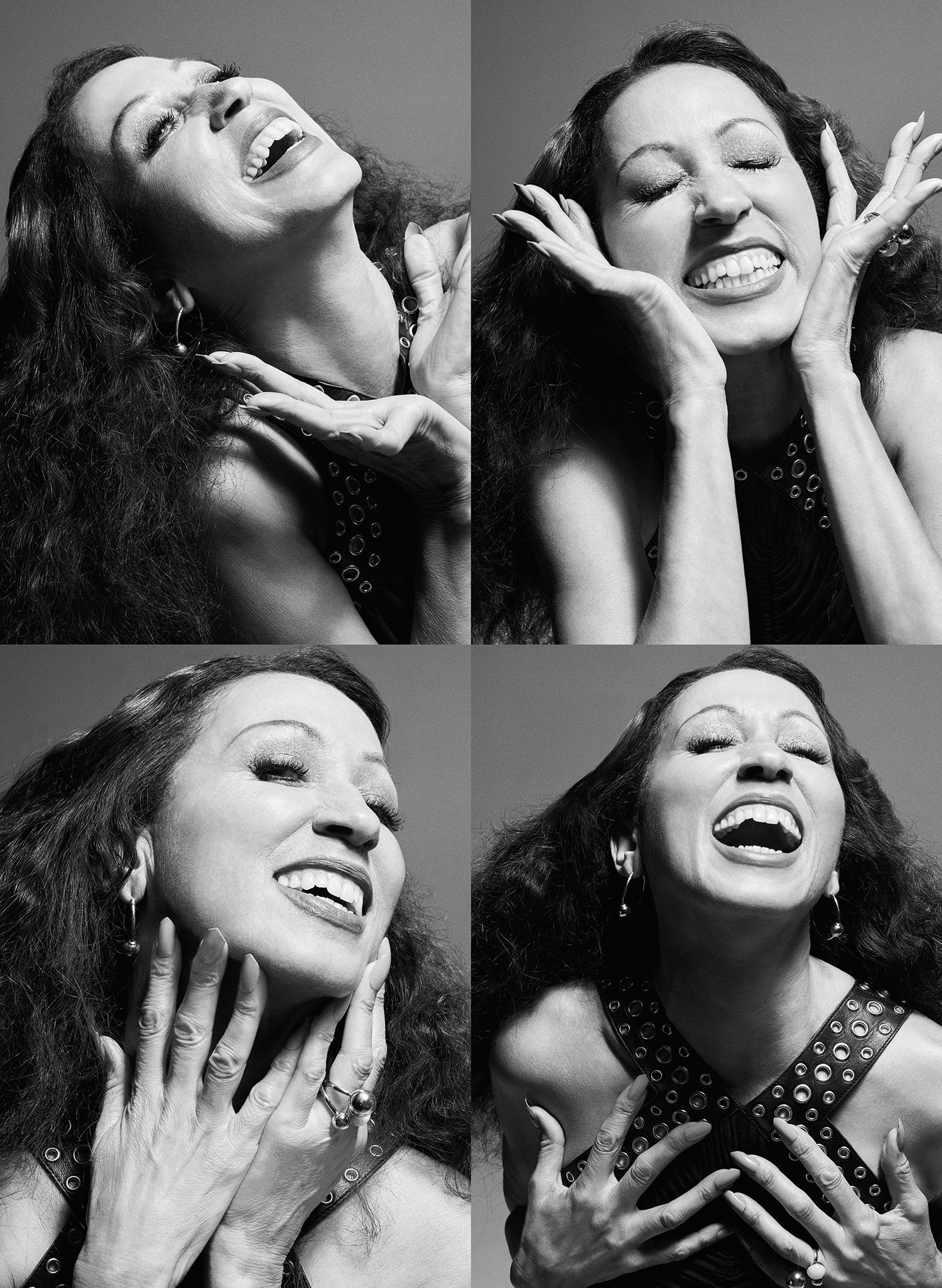 Dress by Alexander Wang Ring | Earrings by Sarina Suriano
Dress by Alexander Wang Ring | Earrings by Sarina Suriano
She is a woman who has danced with Dietrich and Warhol, was a muse to the genius Yves Saint Laurent, became a favorite to photographers Irving Penn and Richard Avedon, and was one of the first African American models to walk the runways in Paris. Pat Cleveland is an icon that has the same vivacious, exuberant spirit that helped build a career which has spanned over five decades.
To call her simply a model would not do her justice. She is a star. Former Vogue editor-at- large Andre Leon Talley once called her “the first black supermodel, the Josephine Baker of the international runways!”. Even with all the fame, traveling the world, dancing on tables, and living the glamorous life with an eccentric and famous crew of famous friends. A tour through the South modeling for Ebony Fashion Fair, exposed her to the nation’s racial divide on a first hand account. Confrontations with the Ku Klux Klan, and later with the American fashion industry’s incessant bigotry, led Pat to flee to Paris where she soon became the house model for Karl Lagerfeld. Since then, she has traveled the world, shot with some of the biggest names in history, was a fit model at the atelier of Christian Dior, and immortalized the colorful characters of her life via her new memoir, Walking with the Muses.
What is it about the fashion industry and modeling that inspires you and gives you passion for the work?
Fashion gives you an open runway, like a runway for an airplane. You get ready to take off and go to another world with all these people that you meet. The designers and all the visionaries, like the photographers who are so technically talented, they make you look better than you could ever imagine.
Can you tell us how you first started working for big designers like Halston?
Halston was one of the first designers to see me in a fashion show in Chicago, and I did not know who he was at the time.. He was introduced to me by Stephen Burrows, the designer, and he told me, “that’s someone you should know and work for” but who knew he would become what he became. It was the green part of his career, the early beginnings and luckily enough I was there. He was so gorgeous, so confident, and such a gentleman. To be with him in a room he would give you confidence about yourself by just being in his presence. And there I was, right off the Fashion Fair, and Stephen Burrows introduced me to Halston. Jump to sitting there with the other ladies in his New York salon on 68th street. The Getty’s and the Berenson’s and all these amazing people like Naomi Sims and Elsa Peretti and Anjelica Huston.
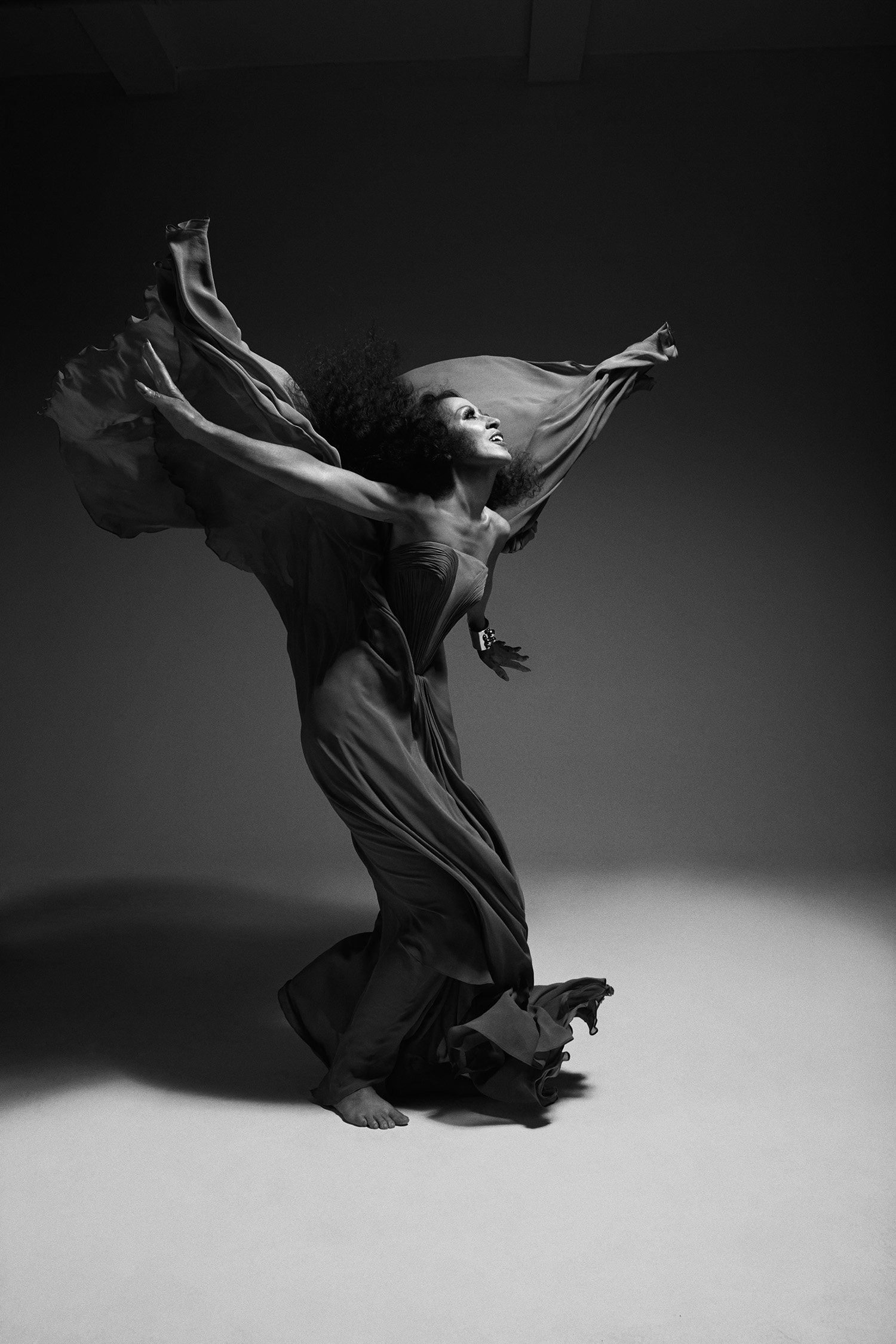 Dress by Reem Acra | Earrings and Bracelet by Sarina Suriano
Dress by Reem Acra | Earrings and Bracelet by Sarina Suriano
What part did the late Yves Saint Laurent play in your career?
He was so important and so young and so beautiful and such a free spirit and untouchable by many. He was so playful, and to my career he was everything an artist should be because he could teach you how to totally evaporate yourself and be in that space of being in love with something other than yourself. He was friends with my friends, like Antonio Lopez, and it was like a big love fest and we would go out and dance all night. Everybody was young and gorgeous and free. It was like a big flirtation, and I was just thrown in there like a sandwich with the boys floating along with the rest of the swans.
What was it like to be a fit model for the legendary couturiers of Paris?
Being pinned into couture…what an honor! Now there is a whole new way of producing things, with everything done by computers. But the draping! If you can see a couturier drape a dress, then you have gotten to the art of fashion. It’s like a dance you can see them throw the fabric and I remember seeing Halston doing that and Karl Lagerfeld and Yves Saint Laurent. Like one time I saw Halston taking a bolt of fabric and just throwing across the floor and just start cutting into it rapidly. He just worked out of faith, he just knew it was going to be good. The confidence they had was important.
What were those first fashion shows like for you?
It was a different time. We used to walk down the salon with cards with numbers in our hands so clients would know what dress to order. He had jazz bands play music, but it wasn’t like the big shows they have now; it was the beginning. I mean, the big show was the Fashion Fair and we had commentary like, “This is a sensuous woman walking down, imagine having this outfit from Dior” or something like, “Imagine yourself in this Valentino, wearing this to your debutante ball”.
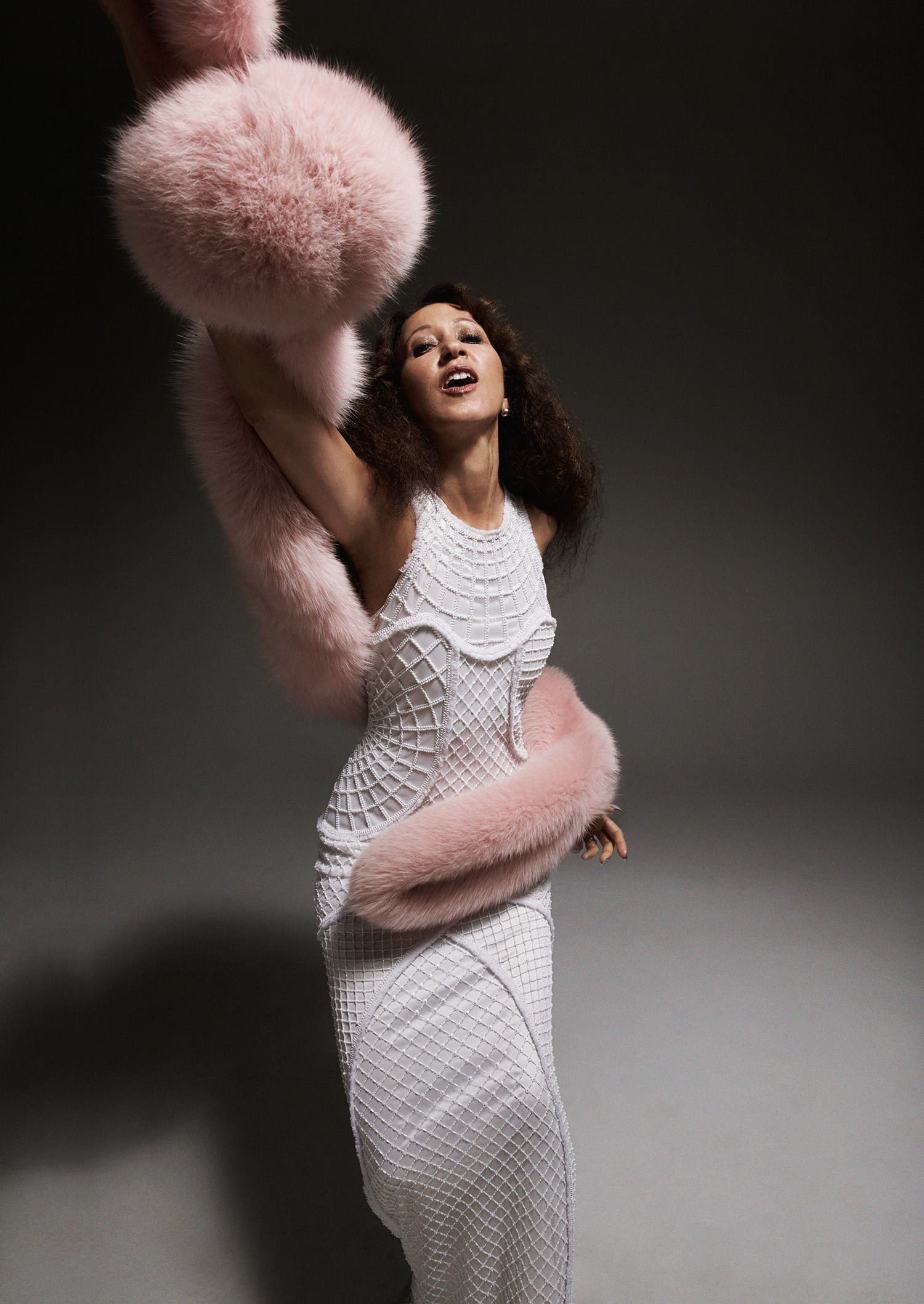 Dress by Joanna Mastroianni | Fur by Georgine | Earrings by Sarina Suriano
Dress by Joanna Mastroianni | Fur by Georgine | Earrings by Sarina Suriano
Do you remember the change in the production value as in the runway shows from what you described to what they are today?
Well, I think Hollywood had a lot to do with it. The director Busby Berkeley, putting on a show, being in America, the funky sounds and music and dancing, and this crazy time started exploding in every culture. I remember going to Paris and it was just a small room full of socialites and countesses and princes sitting in a beautiful salon having tea and looking at us models in the dresses and touching the fabrics. Back then the music was setting the pace and they got the black girls to move to the music and then you HAD to move. I started dancing like a dancer on the runway and then the audience would feel good and it was contagious.
In your book you describe your first big fashion experience with the Ebony Fashion Fair and you talk about the traumatic experiences with racism in the South. How did that affect you?
Thank you for asking that question. I think it’s just a divide of narrow mindedness when people are not well educated. I think that was a time when people had a lot of fear because social things were changing. There were some very well educated black people who were coming up and getting these wonderful jobs and they were the audience of the Fashion Fair. Doctors and judges and professors and other affluent black people who were donating money to send black youth to college. That was the whole reason for the Fashion Fair. Mrs. Johnson (co-founder of Ebony magazine) would go off to Europe and, being a black woman, she was not even allowed to come in and buy the couture! She spent large, large amounts of money in these design houses and they finally had to let her in, and she brought all that fashion back from Europe. She introduced the masses to the type of high quality garment that would just knock your eyes out! Paris was couture; that’s where real fashion started. We were the wild, up-and-coming couturiers of America.
All of the young designers no longer had to sit there and dream about one day being in Paris because Paris came to them! I was wearing Yves Saint Laurent, Givenchy, Christian Dior, Balmain all the french designers and I wore those clothes for a nineteen city Fashion Fair tour, on a bus, hungry, at night, being chased by the Ku Klux Klan. Watching my beautiful innocent self grow thorns, because of the behavior of the people that I thought were stars. I saw a lot, but all of it helped me toughen up. That’s where I learned to walk the runway, by doing those Fashion Fair shows. We had this wonderful jazz musician and in between shows we would dance while he played the piano and that’s how I started developing my walk. A lot of the time it was a small venue that we showed in with all of those elegant clothes. And the ladies that came dressed so beautifully with their fur stoles and their gloves and their church hats. They were marvelous people it was a wonderful experience.
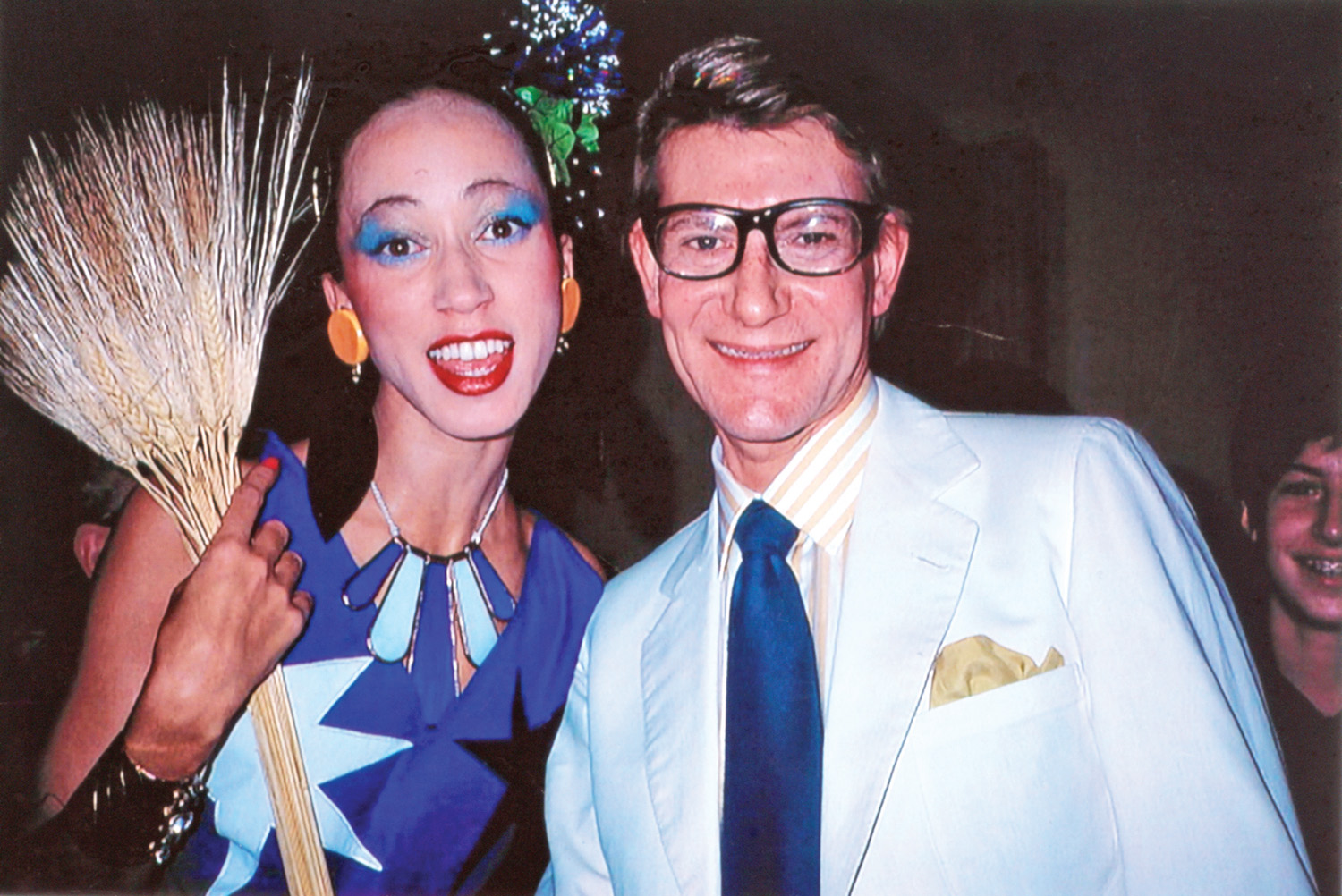 With Yves Saint Laurent backstage after his show, 1972. Afterward, we went to the top of the Effel Tower. Courtsey of Roxanne Lowit.
With Yves Saint Laurent backstage after his show, 1972. Afterward, we went to the top of the Effel Tower. Courtsey of Roxanne Lowit.
How did you first get the inspiration to get on that Fashion Fair bus and start modeling at 15?
My mother and I were just going along on that bus like a band. I was just happy to get out of the house! It was so astonishing, like an answered calling. My mom said “you can be a model” and I loved Colleen Corby, Donyale Luna, Veruschka. The big models. I just thought, “who me?” I just wanted to be a designer or a painter. I used to walk around with my hair sticking out and no makeup on, and my mom used to say, “If you don’t put on any eyeliner you’re going to die an old maid!” and boy did I rush to put that eyeliner on. The first time I did, I got discovered in the subway. I had my homemade clothes on and I was looking good and someone saw it. I must have been like a lighthouse or something reaching out for help like “HELP! I DON’T WANT TO DIE AN OLD MAID!!” (laughs)
Before you were a model you were designing your own clothes and it was partly for that reason you were discovered on the subway in New York. Who was the person that discovered your designs?
It was Carrie Donovan’s (Editor at Vogue) assistant at the time, she was from London. I guess she had a different kind of eye. It was Vogue’s own boutique and they discovered me, and I started designing for them and Henri Bendel and Tiger Moss. I started making clothes when I went back to school and selling them and I did very well. I got my first picture in Vogue as a designer double page spread thanks to Carrie Donovan.
It is not every day that a young black girl from Harlem becomes a legendary supermodel, what would you a credit this amazing success to?
It’s not you by yourself, it’s the people that love you, that put you there. It’s those love stories of what their vision is and when you arrive, that’s the story. I was blessed to arrive at the right time for who I am and what I am. (whispers) Actually I think it all happened for me because I looked just like this boy that used to be a drag queen and since they couldn’t use him for Vogue they used me instead. But nowadays I wouldn’t stand a chance because they would actually just use the guy. (laughs) So that was my good fortune.
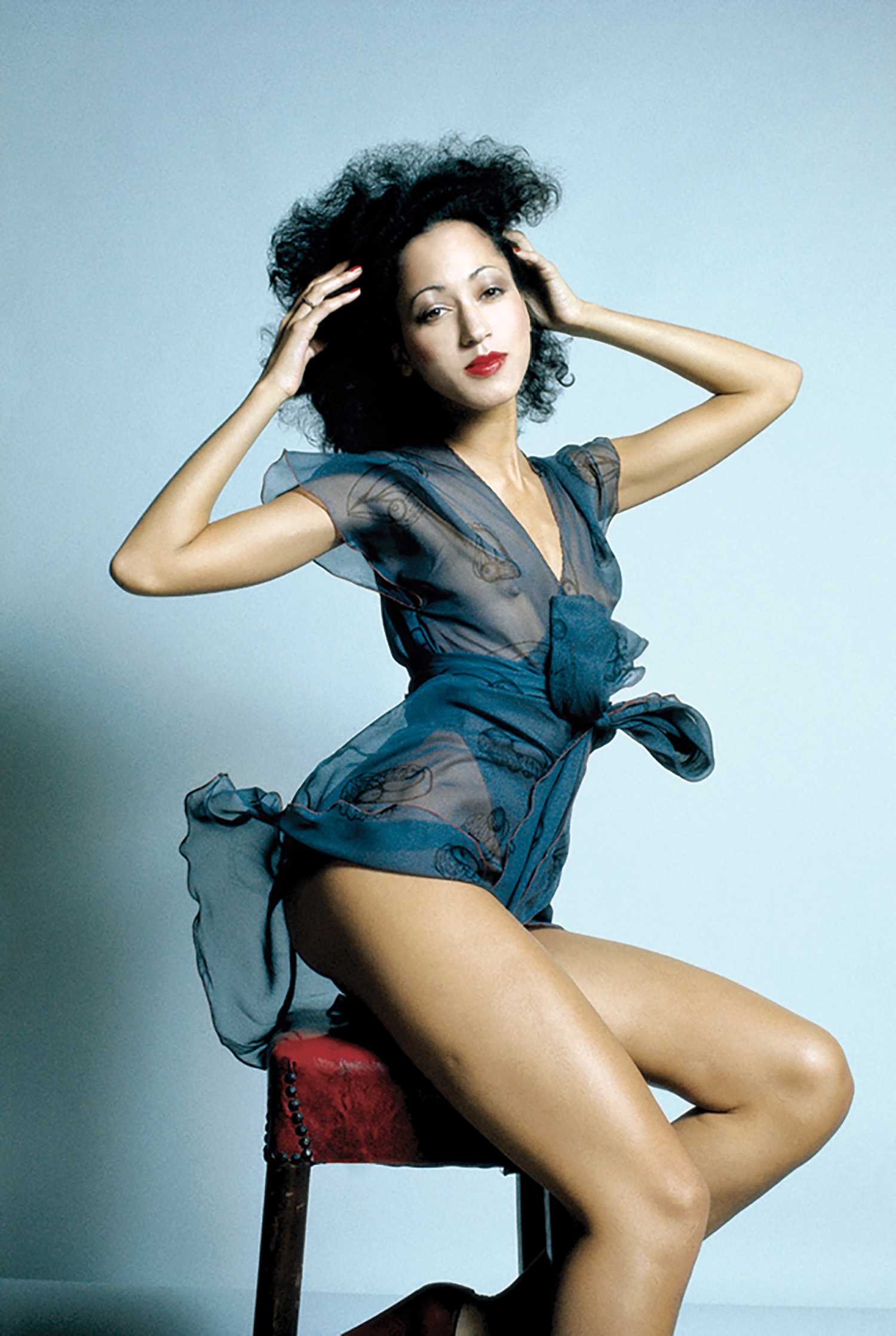
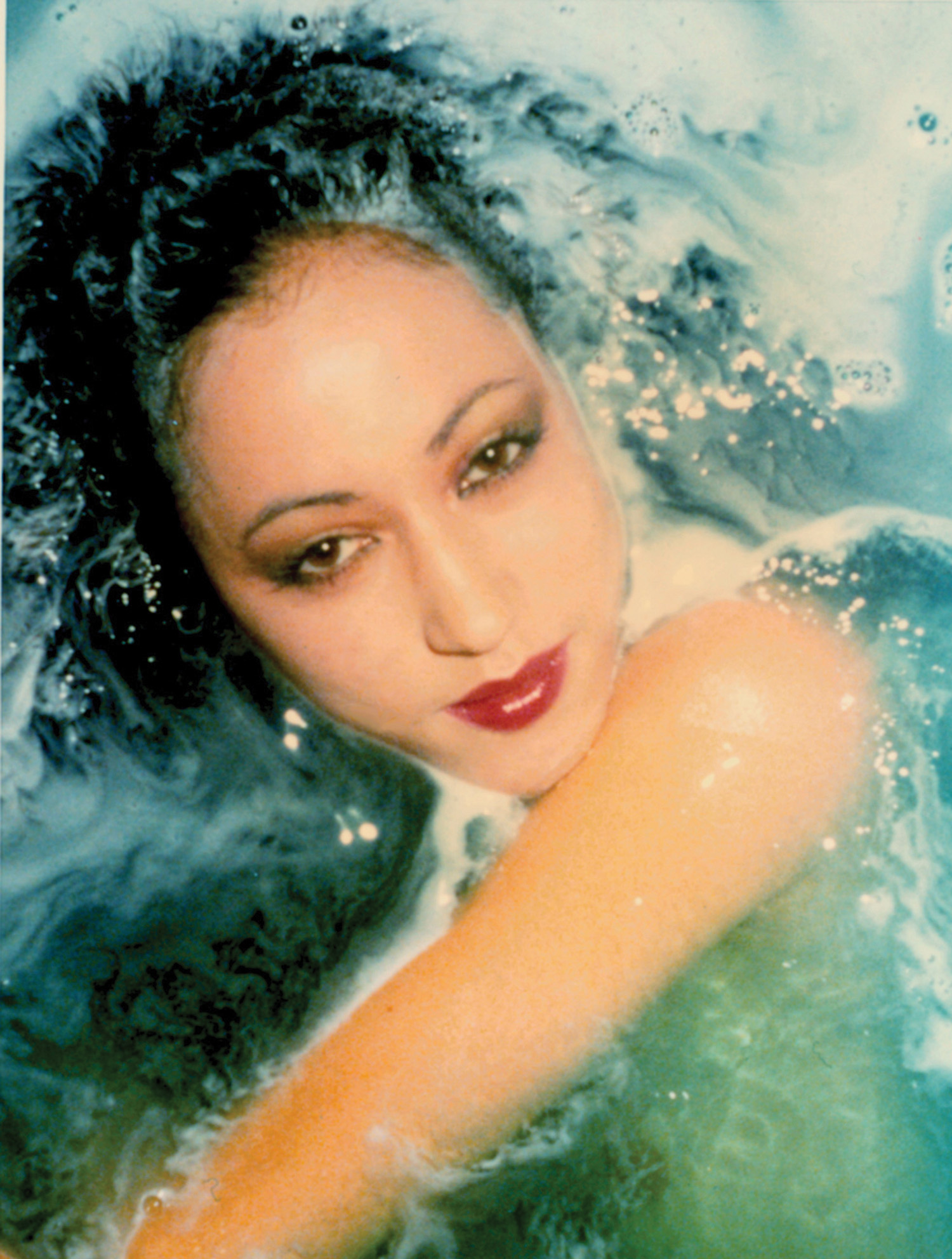 Photos taken by Antonio lopez, images curtercy of Mao PR.
Photos taken by Antonio lopez, images curtercy of Mao PR.
How did you get your first meeting with Avedon? What was it like to work with him?
I remember I tried to get a meeting with him and I couldn’t so I just went straight into his studio. I was met by a secretary that said, “LEAVE right now, who sent you up here?”. That’s when I first started going around and trying to get meetings. Then by chance I started working with him through editors who booked me as a model for Vogue. At first it was just simple things like stockings. Then he took notice and he asked if he could photograph me, and he did photograph me for Vogue. Oh, one time he even invited me into the darkroom to watch him develop and process film! I was in school taking photography classes and I got to experience him working in the dark room, and I saw the magic that he did when he was developing and processing. I wasn’t the girl next door; I was too exotic. But he would still use me as much as he could and we would travel to far locations like TV commercials in Japan where they wouldn’t need the typical girl next door, but someone more like me. So we became friends and my agent at the time was good friends with him so he would invite us to his home. Then I moved to Paris and I didn’t see him that often. So many people didn’t like me or told me I couldn’t model for certain magazines but that was ok because if you don’t have the challenge you’re not going to be the best horse in the race.
You have a quote that says, “That flaw is your best feature”, can you tell us more about what that means to you?
It’s always that you have to find a some kind of something, for me I guess it was my bow legs and fuzzy hair that gave me that walk and gave me something to flit around with like butterfly wings. It may not work now, but back then people were intrigued like “oh what’s that? Let’s fix it up!” I was like an ostrich with no feathers and then they glued them on me.
In this issue of Iris Covet Book we also have a feature on photographer Irving Penn. Could you tell us about your first experince working with him?
My first big time picture in Vogue was with Irving Penn. I wasn’t exactly sure of who he was but I knew he was a Vogue photographer and I came into the studio and they said now go downstairs and wait. So I went downstairs and there was a big room with a big white block in the middle of the floor. He came into the room and he says “go sit on the block” and so I sat on the block and I started figiting like crazy and he says “can you sit still please” because you know I move a lot. But he taught me a lot with just sitting still. He said ok now I just want you to use your eyes and look over there and look at something. I was watching a bug crawl down the wall and I was watching it and he screams “That’s it! That’s it! You got it!” and I was like, well I’m just looking at this bug on the wall. We worked a lot together, he photographed me a lot. I guess it’s because I learned how to sit still. (laughs)
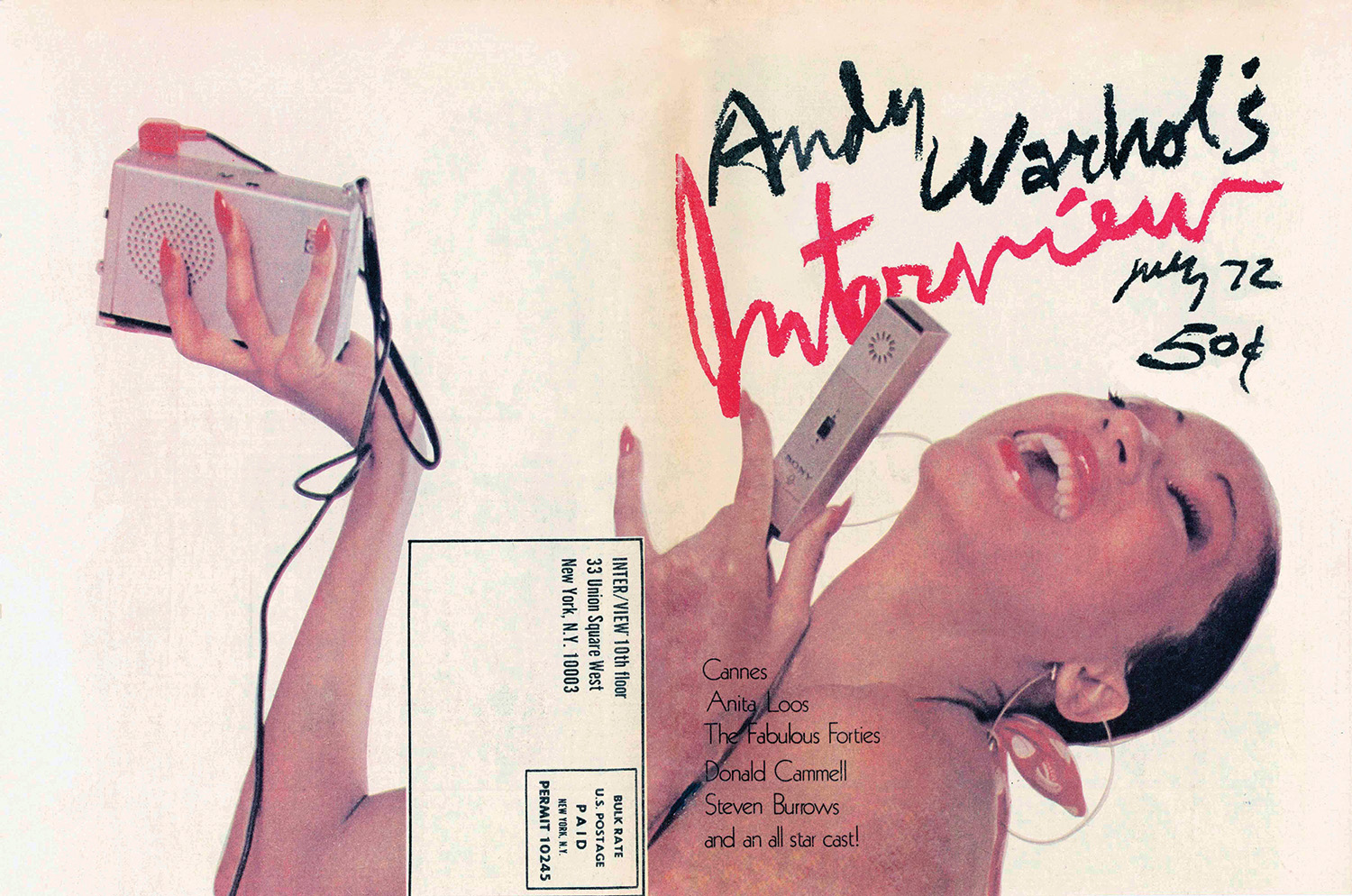 The artist Richard Bernstein created this cover for Andy Warhol’s interview magazine July 1972 issue. from a photograph taken by Berry Berenson. Courtesy of BMP Holdings, LLC
The artist Richard Bernstein created this cover for Andy Warhol’s interview magazine July 1972 issue. from a photograph taken by Berry Berenson. Courtesy of BMP Holdings, LLC
Throughout your long career as a model, can you tell us about one of your most memorable shoots?
One time with Guy Bourdin, I was in England out in the middle of the North Sea in January, nude and painted blue, and he had me balancing on this little stand in the water in the freezing cold and I had to do a physical thing where I stretched out like a swimmer while balancing on my stomach on a little thing the size of ipad so you wouldn’t see it. The entire team was on the beach and I was the only one out in the water freezing and waiting and where was he? He was the only one not there.
He was known for showing up on set and just taking one photograph, but he would show up so late and you would be there waiting and waiting. I think the only reason I was able to hold that stretching pose for so long is because I was frozen in that position! That was for Max Factor and they ended up never using the picture.
Andy Warhol was also a fixture in your career and in New York City at the time, what was it like to be friends with such an interesting and famous man and his Factory group?
My god he came out of that world where he took things and just made it his own. I asked him once, “how come you always draw those soup cans?” and he said, “because my mom abandoned me once in the grocery store and I was hungry and I just remember seeing soup cans.” So I guess it had meaning for him. And then pop, there you go! Pop goes the weasel and the weasel goes pop. He took everyone along with him for the ride and all of these people were hungry to be stars and he’d say “Let’s make art!” No one really knew us at the time. Then we started growing and everybody started getting famous and then we were superstars.
We even had Marlene Dietrich in the mix. Going over to her house to give her clothes. Oh, and Karl (Lagerfeld) made her lingerie and he decided to give it to me so I wore it out to go dancing one night. When we walked into the club, everyone stood up to look at us and my dress got caught on something, and I put my arms up to get loose, and then I was nude just wearing a feathered g-string and the champagne was popping, and we were in Paris, and we were stars! We were a gang; we had the latin beat. We were Americans!
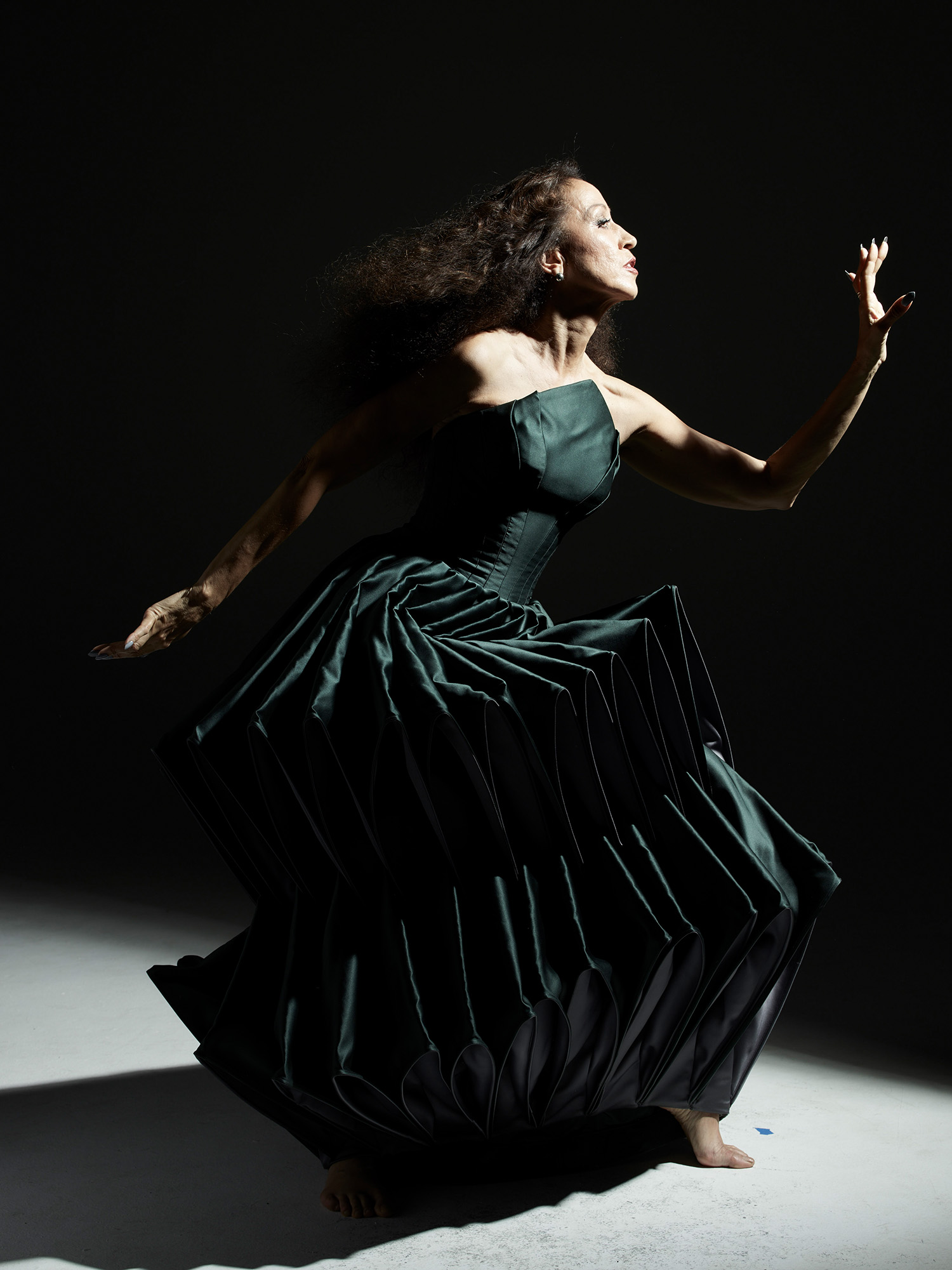 Dress by Zach Posen | Earrings by Sarina Suriano
Dress by Zach Posen | Earrings by Sarina Suriano
With so many great stories to tell, why did you choose to write your memoirs now?
Because everybody is torturing me “When are you doing that book? You’ve been writing it since you began a hundred years ago!” I said, “Well you know I’m a turtle.” I always thought, “It’s not ready.” Writing became nice and juicy and greasy and I didn’t have time to draw because drawing takes time so I started scribbling words. Then the words turned into sound which became like poetry which was my first book. I started writing these stories about myself from my diaries, and I took all my information and I had like fifteen boxes with thousands of pages of writing which is not in the book. Would you take a giant piece of marble from southern Italy and just put it up there as art? No, you gotta chisel away at it! So I kept on chiseling away until finally I realized I needed some help to chisel. Then everything came into place thanks to the universe and I got an agent and a publisher, Simon and Schuster, which I felt so comfortable with.
Can you describe to us how editing down all of your memories and giving voice to your life experiences was for you?
It’s like a dream come true God says “just do it!” and you start doing it. You’re up at night and you’re writing and you ask yourself “Why am I doing this? Who even cares?” and then you know what you start to care about? The people you write about in your own stories. I was like, “hey wait a minute. That person really meant something to me and they are not on this planet anymore; I better leave something about them!” You know it’s not always just about the most famous people, it’s also about the people who definitely did step into your life even if it was for a moment but made you realize something. So I heard voices and I wrote it down because that’s what you do when you write. You listen and you allow it to happen and that’s why I did it. For the experience. The process of writing in that way has been quite a gift to me because now I know how to do it. I didn’t know before; it’s like learning to walk.
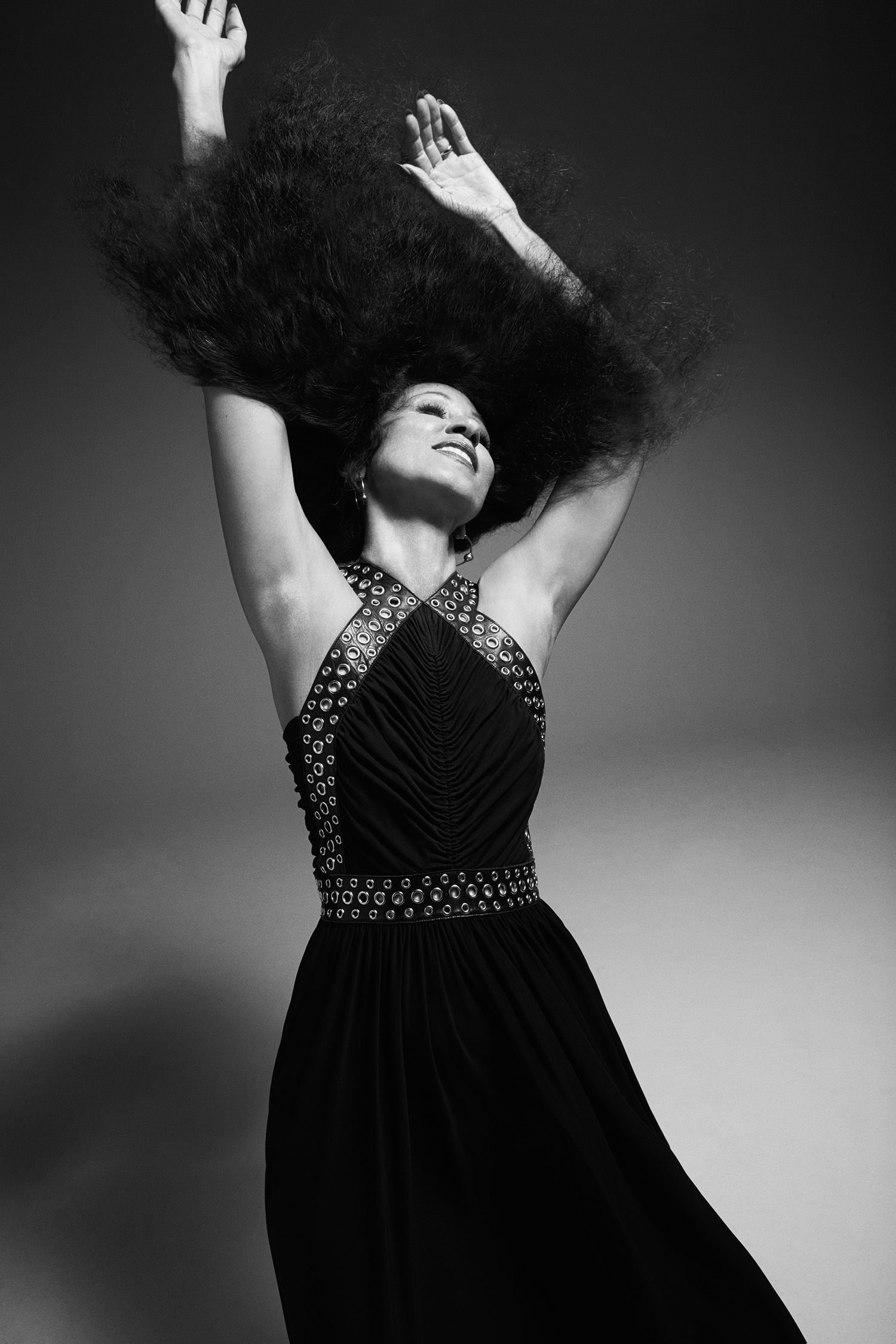 Dress by Alexander Wang | Ring and Earrings by Sarina Suriano
Dress by Alexander Wang | Ring and Earrings by Sarina Suriano
So now do you feel you’ve told your whole story?
That one is done, but now I have the fever and I’ve got a lot more to give. I don’t know what direction it’s going to go in yet, but I like to try new things out. Oooooh, what I’m going to do next! Ooooooh, I can’t even tell you!
What do you think is the key to your longevity?
Health. Your friends, they give you a lift up. I guess sometimes this kind of longevity thing it is so strange. I guess it’s just the time. People want to live longer and they feel that your stories are important and want to know things “How do you this? How should I do that”, and I’m a storyteller right now. And I’m like, “Hey if I can survive the wear and tear, YOU can do it too!” I don’t know everything, but I’m finding out.
What was one of your favorite things about writing this book?
Words are very precious, and reading stimulates you because you get to see things maybe nobody can imagine. When you read something you’ll see it your way and hopefully you’ll see it my way too. So I hope people enjoy my words. Everyone has been so supportive of me writing this book. I think it’s just like the good o’days when we would jump up and have some fun and show off and do stuff. I’m still the same person, you know. I just want to recreate a little bit of now. (laughs) recreate now. Isn’t that kind of what we all are doing? Recreating now?
What part did you play in your daughter Anna becoming a model?
It’s not like she didn’t do it when she was 10 days old. When she was 10 days old she had the duchess of windsors pearls in her mouth that I was wearing around my neck which the editor said “let her swallow those pearls and let’s go to Brazil” I said, “No way this baby is 10 days old!” She traveled with me and my son and husband and she got to see the inner-workings of the industry from early on.
What is some of the best advice you would give anyone entering the fashion industry?
On the way up is on the way down (laughs) This industry is like a trampoline. Who do you think you are bouncing up? You’re going to bounce down too, you know.
Do you feel the same now as you did in your 20’s?
Oh yeah, just a different kind of horny! (laughs)

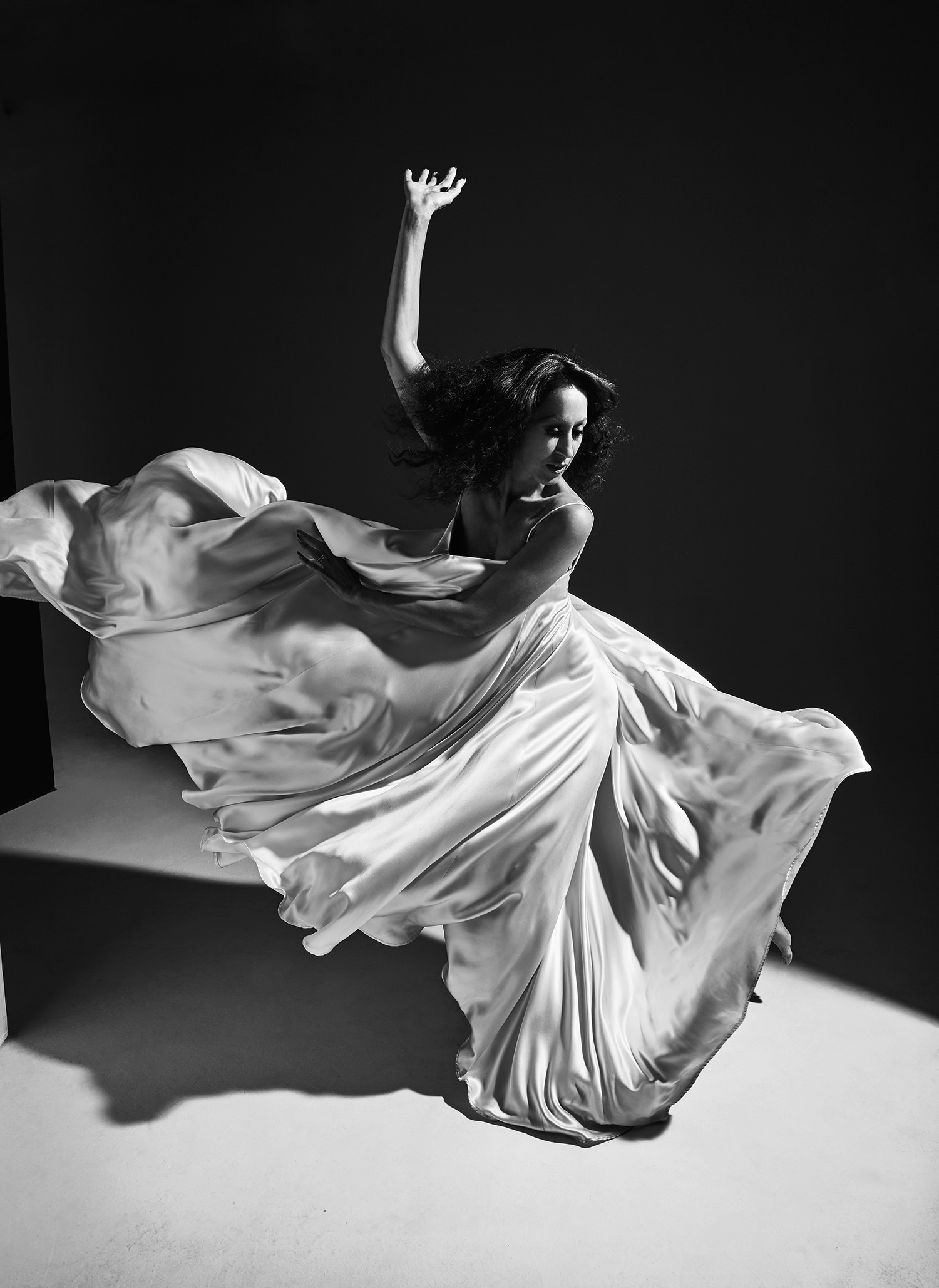 Dress by BreeLayne
Dress by BreeLayne
Photography by Johnny Vicari | Styling by Marc Sifuentes | Art Direction by Louis Liu | Interview by Marc Sifuentes
Hair by Taichi Saito | Makeup by Kanako Takase @ Tim Howard Management Using Giorgio Armani Beauty | Manicure by Krysty Williams | BTS Video by Kao Cheng Kai | Photographer’s Assistants: Efisio Marras and Nick Perry | Stylist Assistant Benjamin Price | Hair Assistant Akira | Makeup Assistant Megumi Onishi | Booking and Production by XTheStudio
